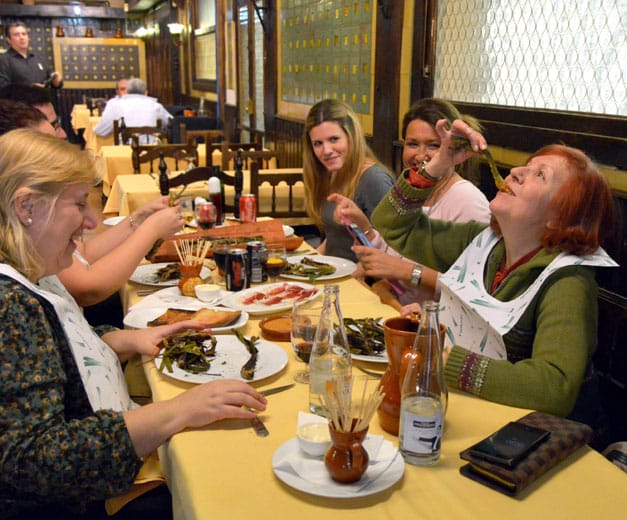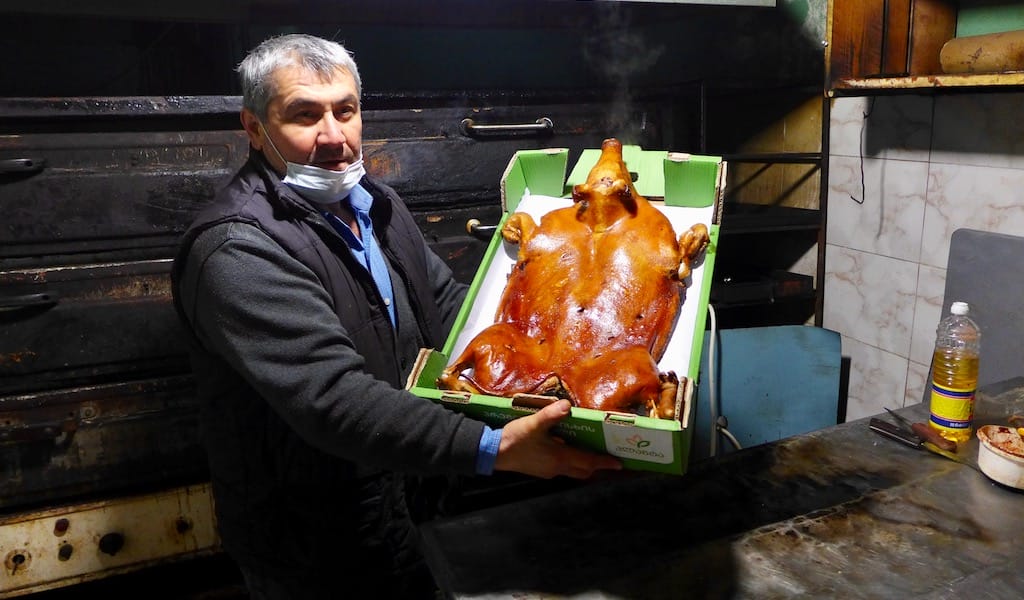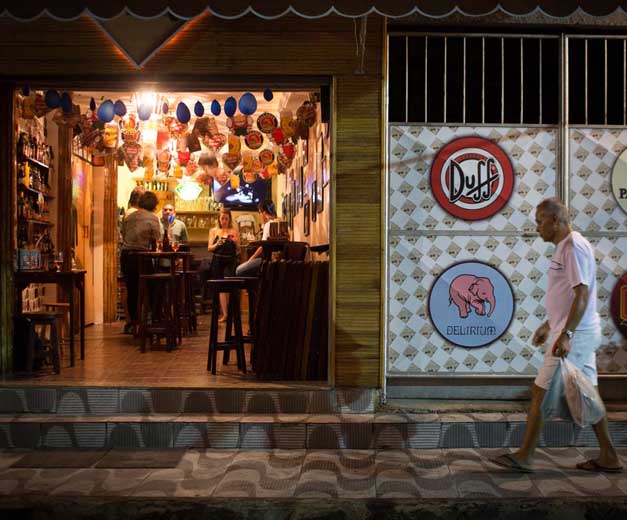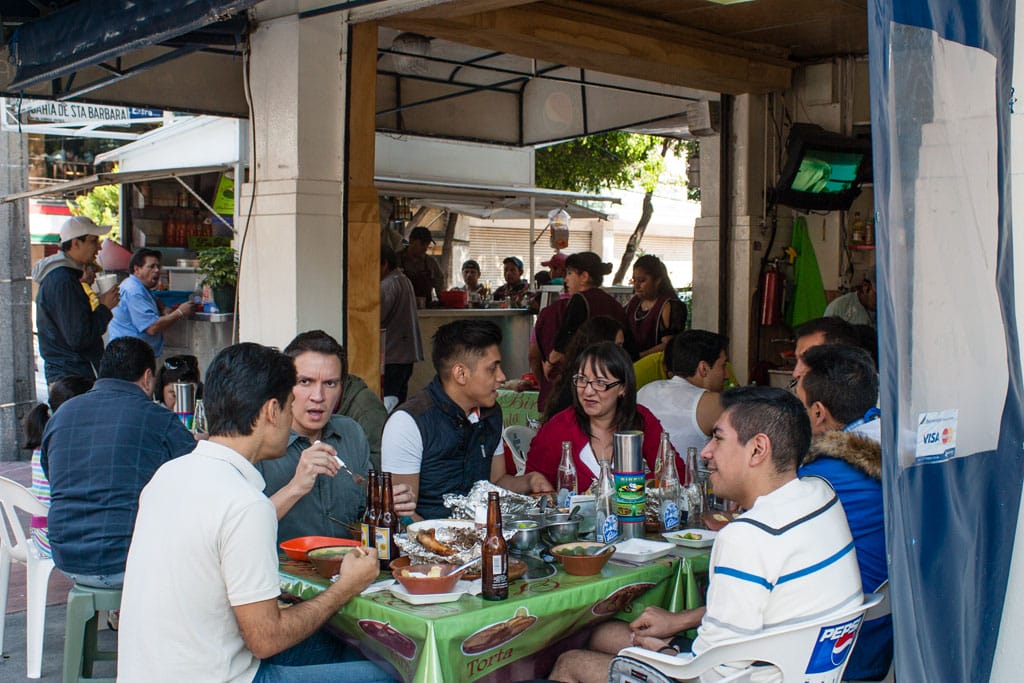Editor’s note: We regret to report that Can Manel has closed.
We don’t mind winter in Catalonia because it means the return of calçots, our beloved spring onions, and calçotadas, the wonderful celebrations that bring people together to eat them. While tradition usually calls for calçot eating to take place in the countryside, there are plenty of places to enjoy them in Barcelona as well. Since 2012, when Can Manel was reopened by the new owners Joel Balagué and Ana Roig, this homey eatery near the Sants train station has become a point of reference for the urban calçotada.
In the spirit of traditional calçotadas, Can Manel prepares a grilled lunch for a group (these onion feasts are not the kind of thing you do solo), with a tasting of this fragrant and sweet specialty. Calçots are typically grilled or barbecued, peeled and then dipped in a special sauce similar to romesco that is made from a picada (chopped mixture) of nuts with tomato, nyora (a dried red pepper), garlic, olive oil and bread. Generally, in addition to the onions, which serve as the appetizer, lunch also includes some butifarra (Catalan pork sausages cooked with peppers) and other grilled dishes. The point of the feast is not just to eat, but to thoroughly enjoy the time spent with friends (and of course to document the occasion with photographs to post to social media). It’s a socio-gastronomical celebration.
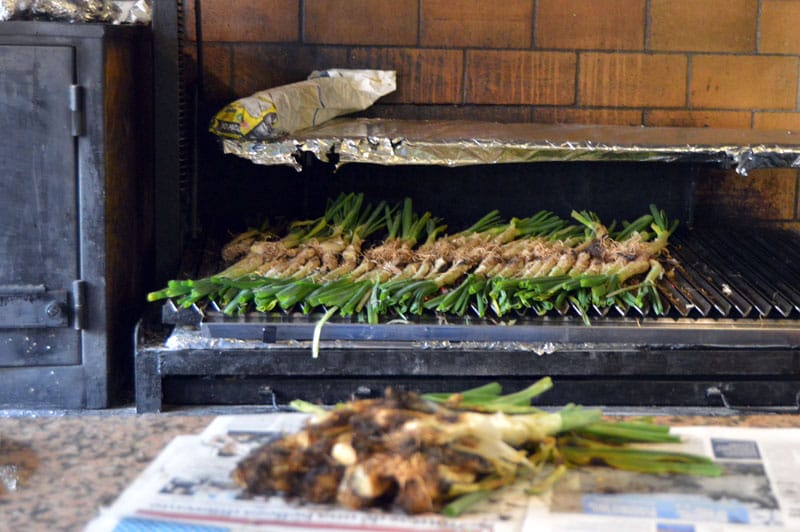
What we love about the calçotadas at Can Manel is their mix of pitch-perfect elements: the proper atmosphere of the rustic neighborhood restaurant, great service, the charcoal and pinewood grill, which imbues all the food with a touch of smoke and flame, the wonderful homemade sauce of almonds, walnuts and hazelnuts and, of course, the calçots themselves. The restaurant gets its onions from a farmer in Valls, which is where the best specimens are grown. They’re always fresh, full of flavor and a good size.
Can Manel excels at grilled meat (pork, lamb, veal, sausages, rabbit – one can even order a favorite chop with some advance notice), fish and vegetables, but these are not the only options. The restaurant offers two main seasonal menus; in winter the specialties are calçots, artichokes and snails, while in summer, there are salads, baked fish (cod with mongetas del ganxet, sea bass, gilt head bream, etc.), seafood and rice preparations and paellas (seafood paella, paella del senyoret, in which all the seafood comes already shelled and shucked, and a vegetable version).
Balagué and Roig carefully select every ingredient they use, ensuring they’re all of the highest quality. For the limited time they’re available, artichokes will be PGI (Protected Geographic Indication) from El Prat, in Catalonia, until their season ends and they are replaced by artichokes from the neighboring PGI of Tudela, whose season lasts longer. The butifarras and the rabbits come from small producers in Balagué’s village of Térmens, in Lleida.

With the raw materials so carefully chosen, thoughtful cooking is of the utmost importance. The artichokes are cut in half, sprinkled with salt, pepper and olive oil and placed directly on the grill to help those seasonings better penetrate the vegetables and enhance their flavor. The snails are the local variety bover, prepared two exceptional ways: a la gormanda calls for the mollusks to be cooked in a sauce and then finished a la llauna, or grilled in a pan over embers, while cargols a la Catxipanda has them cooked with butifarra, eggplant, red pepper and a white wine reduction and served in a clay casserole. The former is creamy and rich, a favorite among customers; the latter is bold in flavor without being spicy.
Can Manel is the kind of place that makes us wish winter would last just a little longer.
 January 3, 2022 Gochi
January 3, 2022 Gochi
Early January is the start of Georgia’s real holiday season: the New Year (Jan. 1), […] Posted in Tbilisi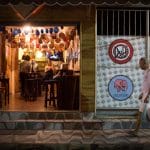 October 21, 2013 Bistrô Estação R&R
October 21, 2013 Bistrô Estação R&R
Favelas just aren’t what they used to be – or what you thought they were. Rio’s squatter […] Posted in Rio November 25, 2013 Birria Santa Bárbara
November 25, 2013 Birria Santa Bárbara
For a case of the morning-afters, Mexicans believe that the best cure is a bowl of hot […] Posted in Mexico City
Published on February 11, 2015
Related stories
January 3, 2022
Tbilisi | By Clément Girardot
TbilisiEarly January is the start of Georgia’s real holiday season: the New Year (Jan. 1), followed by Orthodox Christmas (Jan. 7) and then the Old New Year (which follows the Julian calendar, falling on Jan. 14). In between those main celebrations, friends and relatives visit each other, and all of these occasions make something like…
October 21, 2013
RioFavelas just aren’t what they used to be – or what you thought they were. Rio’s squatter settlements have grown up, though uneven development still leaves considerable gaps in terms of policing, sanitation, sewage and public services. But the favela label is increasingly arbitrary as Rio’s “slums” – we put that in quotes because we…
November 25, 2013
Mexico CityFor a case of the morning-afters, Mexicans believe that the best cure is a bowl of hot and spicy broth. On Sundays you’ll find the bleary-eyed, hard-partying denizens of Mexico City seeking out restorative traditional soups like the tripe-based menudo, also known as pancita; caldo tlalpeño, made with chicken; and birria. Birria, which means “mess,”…







































